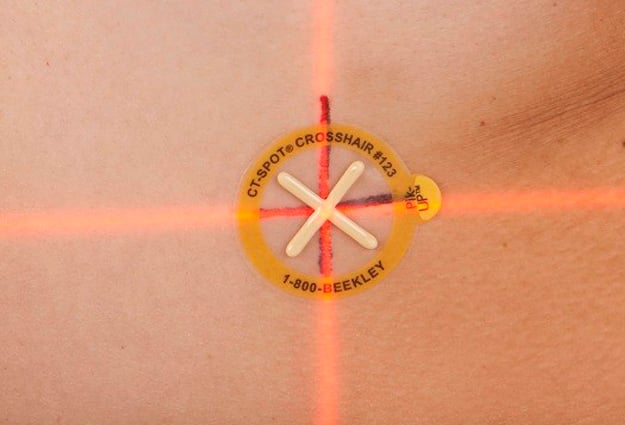
During CT simulation, we use CT Crosshairs for our three point set-ups and we place them on the patient in an "X" configuration.
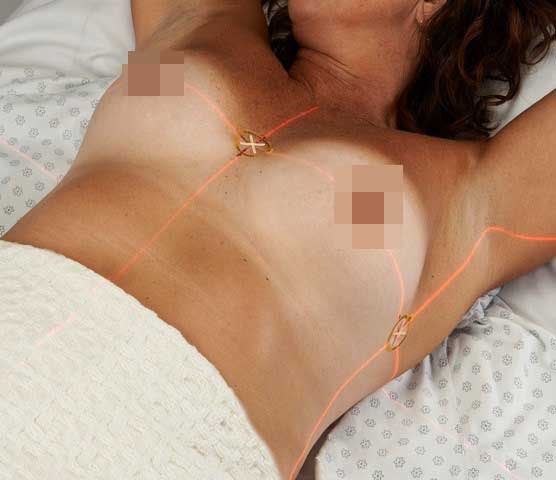

The lasers on the patient's skin are projected as a T. Therefore, placing the crosshair as an X, you know that it is in the center of the mark on your patient's skin.

During imaging, it helps us identify the zero slice or central axis of the treatment field to accurately line up the three points.

As you scroll through the slices you will at first see the two individual legs of the X.
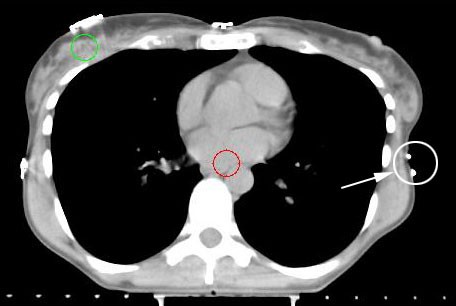
As you approach the centers of the three X's, you will notice a very distinct shape. There is no mistaking when you see this on the image that you have arrived at your zero slice.
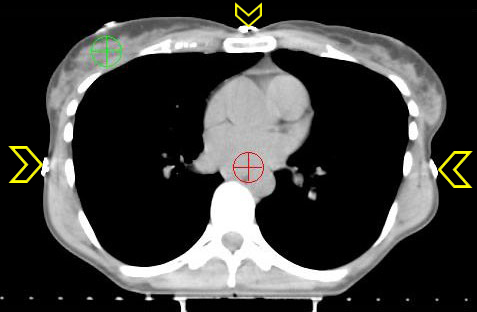
We all know what is like scrolling through CT images looking for those "magical" marks or the three points on the patient. (This image below is one slice above the center of the X)
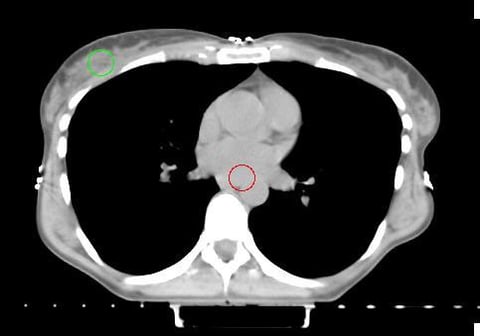
(This image below is one slice below the center of the X)
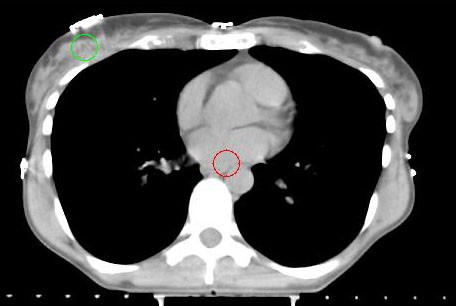
The Crosshair product used as an X is extremely helpful in visualizing these points in the axial plane.
We have found that when using the Crosshair as a plus sign or a t, it can be difficult to visualize the actual center and you could be off by several millimeters.
Also with sophisticated equipment and smaller slices, the need for absolute precision is essential. The CT Crosshair helps us to expedite location of the three markers or points on the patient CT image.
Whether it is a 1mm slice or a 5mm slice, the CT Crosshair makes this process easier than any other product I have tried. And it supports our goal of accuracy and striving for the best outcomes for our patients.

Gayle Crowley
Lead Therapist, Harold Leever Cancer Center, Waterbury, CT


